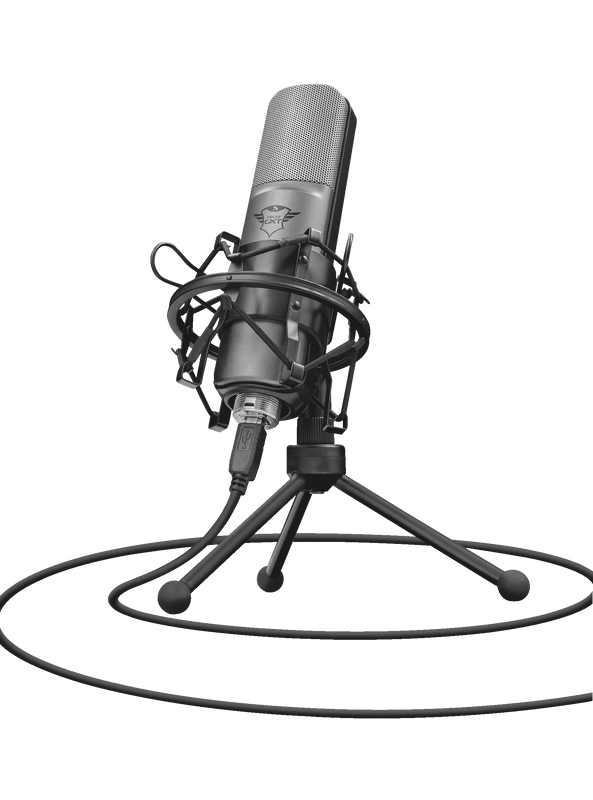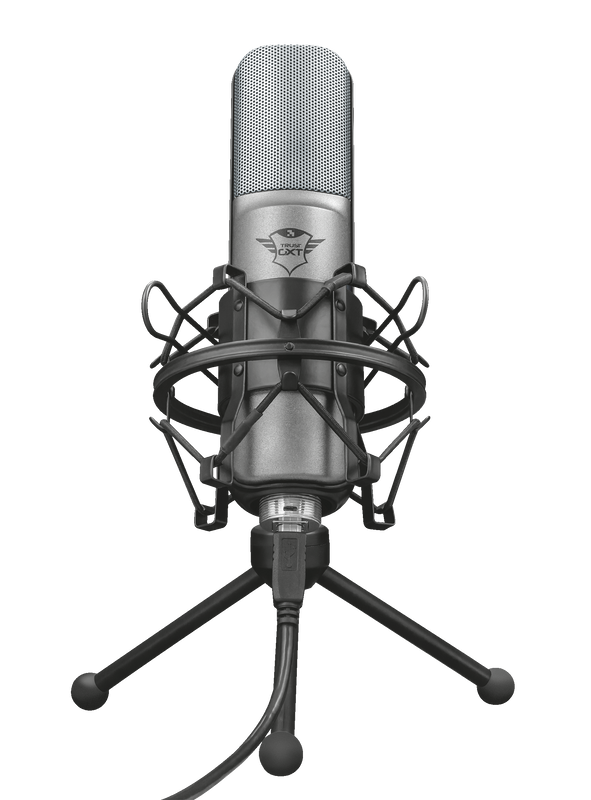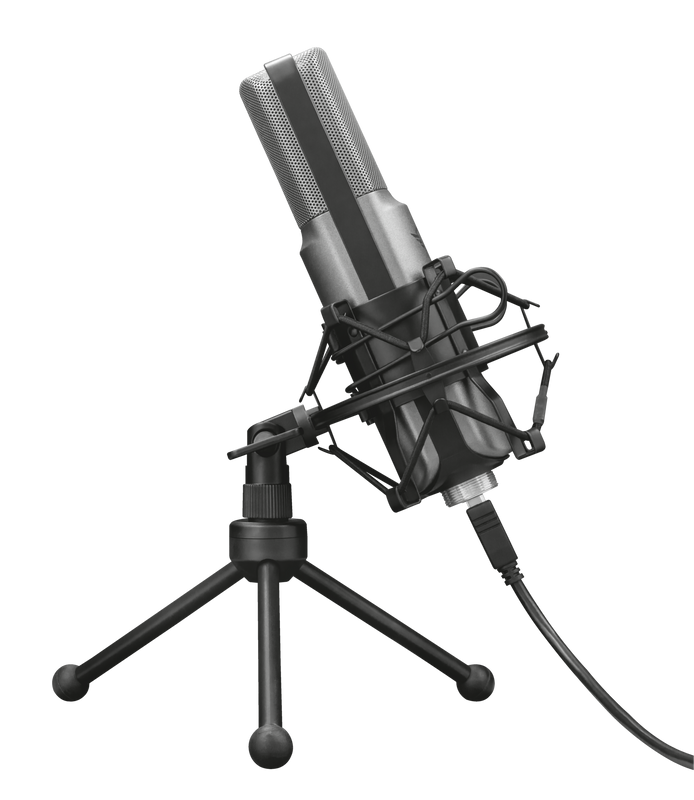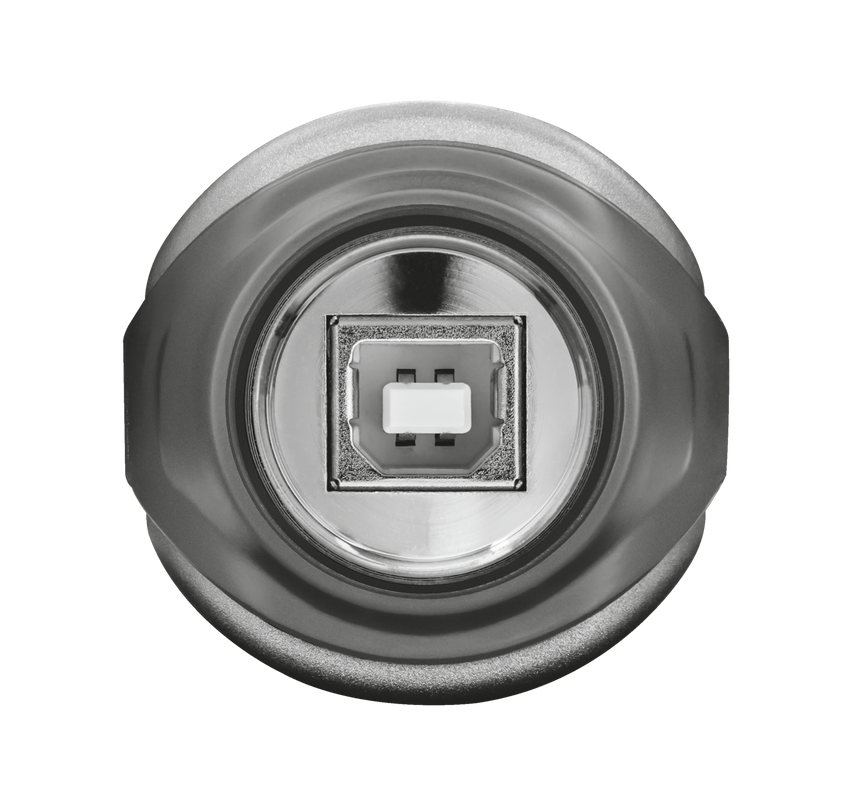GXT 242 Lance
Microfone USB para transmissão em fluxo com tripé e padrão de gravação cardioide de elevada precisão para transmissão em fluxo, podcasts, locuções e música acústica
For Creators
Are your comments during games interesting enough for everyone to hear? Is your new song ready to go public? The GXT 242 Lance microphone captures all sounds perfectly for the world to hear. This USB streaming microphone comes with tripod and high precision cardioid recording pattern to perfectly capture your streams, podcasts, voice-overs and acoustic music.

Recursos Principais
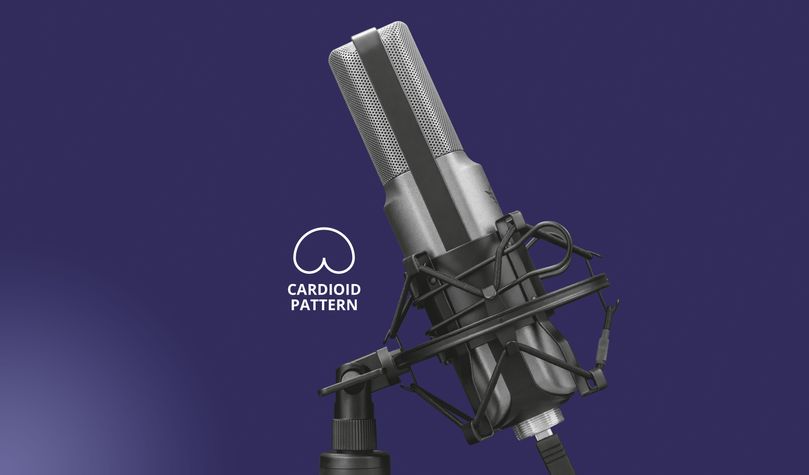
In the spotlight
The rich audio reproduction is made possible by the cardioid recording pattern for high precision recording and minimal background noise. Whatever podium you choose, the clear sound recordings make this microphone perfect for podcasts, vlogs, voice-overs, music recording or streaming on YouTube.
Piercing sounds
The Lance comes with a pop filter which will improve your speech quality. You can go full out because the pop filter will minimize the plosives (like P’s and B’s) and hissing noises. This makes sure that everyone will hear you clearly, without the need for excessive editing. The GXT 242 Lance will pierce your listeners with perfect sound!
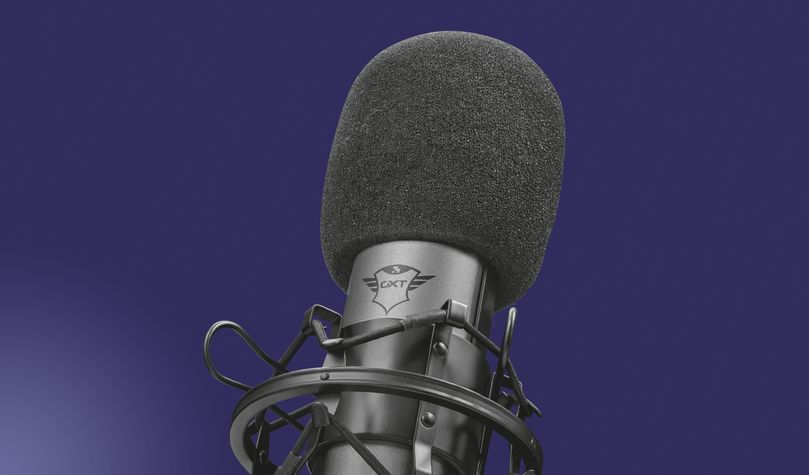
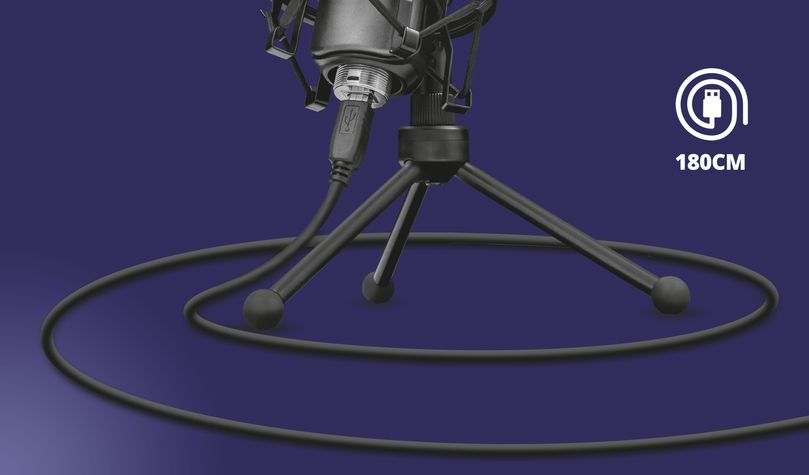
Plug in and sing!
The Lance features a tripod stand to secure your microphone for perfect positioning. Adjust the angle and you’re perfectly audible for everyone in your audience. Simply plug in the 1.80m USB cable and the microphone will instantly work on any PC and laptop.
Especificações
Features
Size & Weight
General
Connectivity
Audio
Microphone
Mount
Compatibility
Informação extra
Microfone
Proteção de vento
Suspensão elástica antivibrações
Tripé
Cabo USB-A para USB-B (1,8 m)
Guia do utilizador
Autocolante da série Gaming
PC ou portátil com porta USB
Windows 10, 8 ou 7
Download
Informações sobre conformidade
Versão 2.0 | Multilingue
Informações sobre conformidade
Declaração UE de conformidade (DoC)
Versão 1.0 | Multilingue
Declaração UE de conformidade (DoC)
Perguntas Frequentes (FAQ)
This microphone doesn't need a driver to function, it functions with the audio capability of the device it is connected to.
To install:
- Assemble the microphone and set it in your preferred position
- Connect the USB-plug to the USB-connection of the computer
- Check that the microphone is allowed to be used by applications in the Privacy Setttings
- Set the microphone as the default sound input and the speaker as the default sound output device on the computer.
- Check the microphone properties.
- The microphone is ready to use
Se você estiver usando o Windows 10 e o microfone não estiver funcionando de maneira ideal (por exemplo, volume muito baixo), recomendamos que você verifique os drivers de áudio do Windows. Certifique-se de que os drivers de áudio (por exemplo, drivers Realtek) estejam atualizados baixando e instalando os drivers de áudio mais recentes através do site do fabricante do computador.
Infelizmente, não temos centros de serviço para consertar produtos.
Um produto com defeito deve ser substituído no ponto de venda durante o período de garantia.
Oferecemos uma garantia de 'devolução ao revendedor' para nossos produtos. Em caso de defeito, você pode devolver o produto ao revendedor com a descrição da falha, comprovante de compra e todos os acessórios. Durante o período de garantia, você receberá um produto de substituição do varejista, se disponível. Para todas as condições de garantia, você pode consultar: https://www.trust.com/support/warranty
Você pode usar o braço do microfone GXT 253 com os seguintes microfones Trust:
- 21753 - GXT 252 Emita Streaming Microphone
- 22400 - GXT 252+ Emita Plus Streaming Microphone
- 22614 - GXT 242 Lance Streaming Microphone
- 23465 - GXT 258 Fyru USB 4-in-1 Streaming Microphone e 24257 - GXT 258W Fyru USB 4-in-1 Streaming Microphone
Note:
- this microphone fits the arm, but can't be mounted directly onto the shock mount. However with the included (with the microphone arm) adapter you can screw this microphone onto the arm.
- the integrated USB-B cable from the 22563 - GXT 253 Microphone Arm is not supported by the FYRU Microphone. - 23510 - GXT 256 Exxo USB Streaming Microphone
- 23466 - GXT 244 Buzz USB Streaming Microphone
You can connect the microphone only when it is an iPad Pro (with USB-C connection).
And then you have to use a USB-C to USB-A converter to connect the microphone to the iPad.
The pick-up pattern of a microphone is the sensitivity to sound relative to the direction or angle from which the sound arrives, or how well the microphone "picks up" the sound from different directions. The most common types are: Cardioid, Omnidirectional, Unidirectional, Bidirectional.
CARDIOID
The most commonly used pattern is most sensitive at 0° (the front) and least sensitive at 180° (the back). This isolates it from unwanted ambient sound. You can use this for most recording applications. It is easy to get a good signal as the cardioid pattern blends out a bad sounding room, a noisy fan in the background, etc.
OMNIDIRECTIONAL
The omnidirectional microphone has equal sensitivity at all angles. This means it picks up sound evenly from all directions. Therefore, the microphone need not be aimed in a certain direction. It will be especially useful in good sounding rooms.
UNIDIRECTIONAL
Unidirectional microphones are most sensitive to sound arriving from directly in front (at 0°) and less sensitive in other directions. This makes unidirectional microphones effective at isolating the desired sound from both unwanted sound and ambient noise.
BIDIRECTIONAL
A bidirectional microphone (with figure-8 pattern) picks up the sound from in front of the microphone (at 0°) and from the rear (at 180°), but not the side (at 90° and 270°). It can be beneficial in situations where you do not want a signal coming from a 90° angle to bleed into the microphone.
Contate-Nos
Contate-Nos
Por favor, verifique nossas FAQs primeiro, é provável que você encontre a resposta lá.
Não encontrou a resposta nas perguntas frequentes? Preencha o formulário abaixo com o máximo de informações possível e um de nossos funcionários do suporte técnico responderá na primeira oportunidade. Nossas mensagens são respondidas na ordem em que são recebidas.
Depois de enviar o formulário, uma mensagem de confirmação será exibida com o seu número de referência. Esta confirmação foi enviada para o seu endereço de e-mail ao mesmo tempo. Se você não recebeu esta mensagem, verifique sua pasta de spam ou lixo eletrônico. Se você não encontrar a confirmação, envie o formulário novamente com o endereço de e-mail correto.
